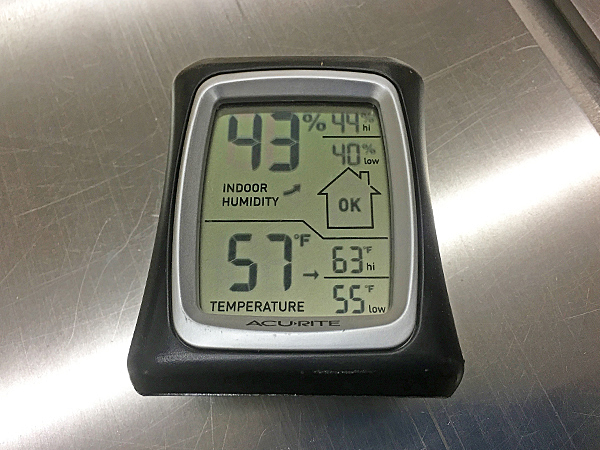
Since I have no room in my house, I am a fair weather woodworker who works outside on my carport. During the winter, I store my tools in a Harbor Freight portable garage (with a wood floor I built), which protects them from wind, rain and snow, but not temperature. Here in Maryland, the temps can often drop into the single digits, though most of the winter is in the 20’s and 30’s [Fahrenheit]. How will the cold affect my tools? – Dan Richmond
Tim Inman: I think rust will probably be your biggest concern. Exposing cold tools to warm, damp air will cause the moisture in the air to condense on the cold steel and rust it. This is the same phenomenon as the “sweaty iced tea glass” in the summer. The cold reduces the air temps to below the dew point, and water happens. It is actually the changing temperatures that cause the problem, not the mere existence of cold.
Another minor issue is oxidation of your nice shiny surfaces. Waxes don’t like to be cooked or frozen either. So if you have nice tools that have been waxed and/or polished, consider wrapping them in a good thick layer of something like an old sweatshirt to keep them dry and comfortable. What feels better than an old sweatshirt when it is cold and damp outside? Other than that, just remember that electrical cords and things like that don’t like to flex when they are brutally cold. If you decide to work on a cold day, give the sun a chance to warm the cords before you go at it headlong and full force.
Chris Marshall: I try to keep the relative humidity in my shop as low as possible, by running a dehumidifier year-round and keeping the doors and windows closed on humid days. I can do that because the building is a sealed room. During the mild months, relative humidity in my shop hovers at around 40 to 50 percent. In the winter, it will drop about 10 percentage points lower than that with the heat on. It’s remarkable how, even in the dead of our mild Virginia winters, my dehumidifier will continue to pull water from the air. In my case, I think much of it migrates up through the concrete slab floor from the ground — no vapor barrier was applied to the exposed soil before the slab was poured, unfortunately. By keeping the relative humidity low, moisture doesn’t condense on my iron and steel tools, even when I warm up the room for woodworking during the winter months.
But in your situation, Dan, a portable garage won’t give you much control over the relative humidity of the air inside your storage space. So, keep your cast-iron surfaces protected, as Tim outlines above.







